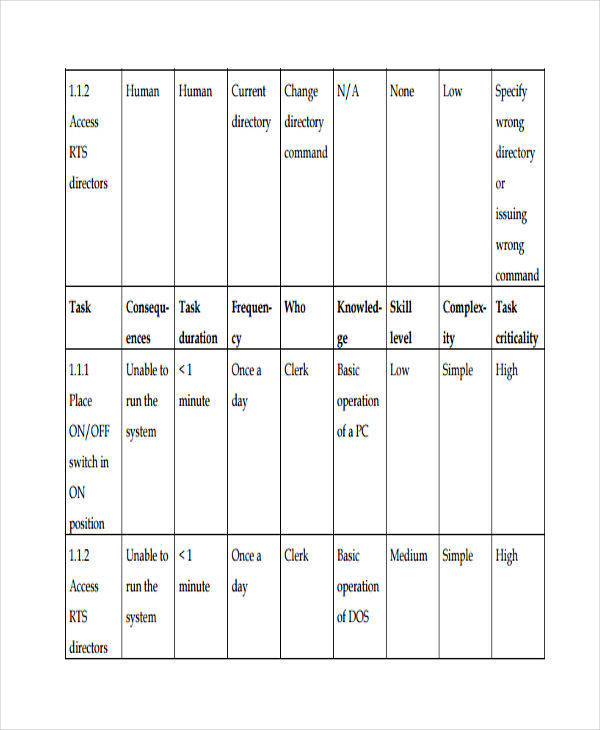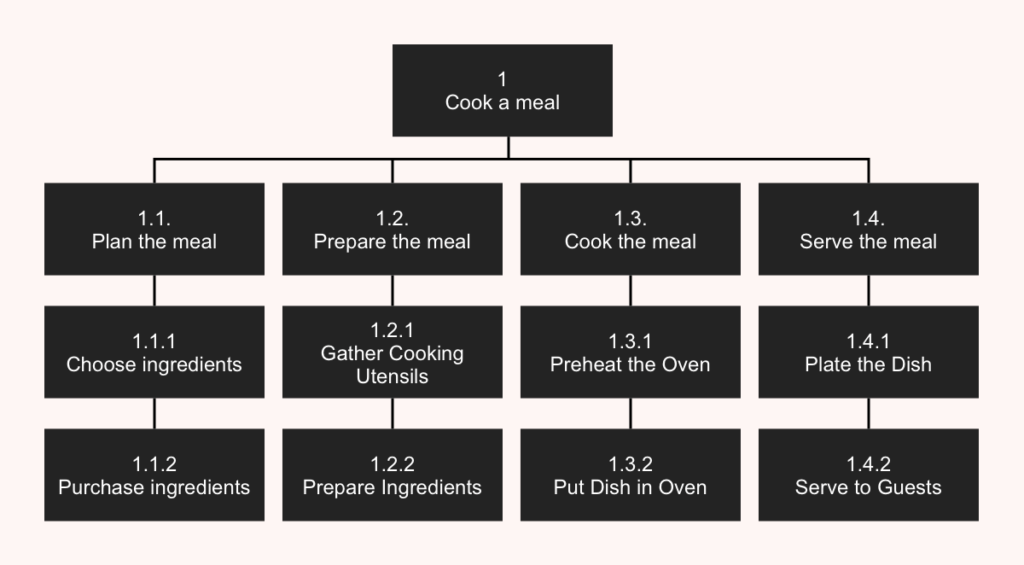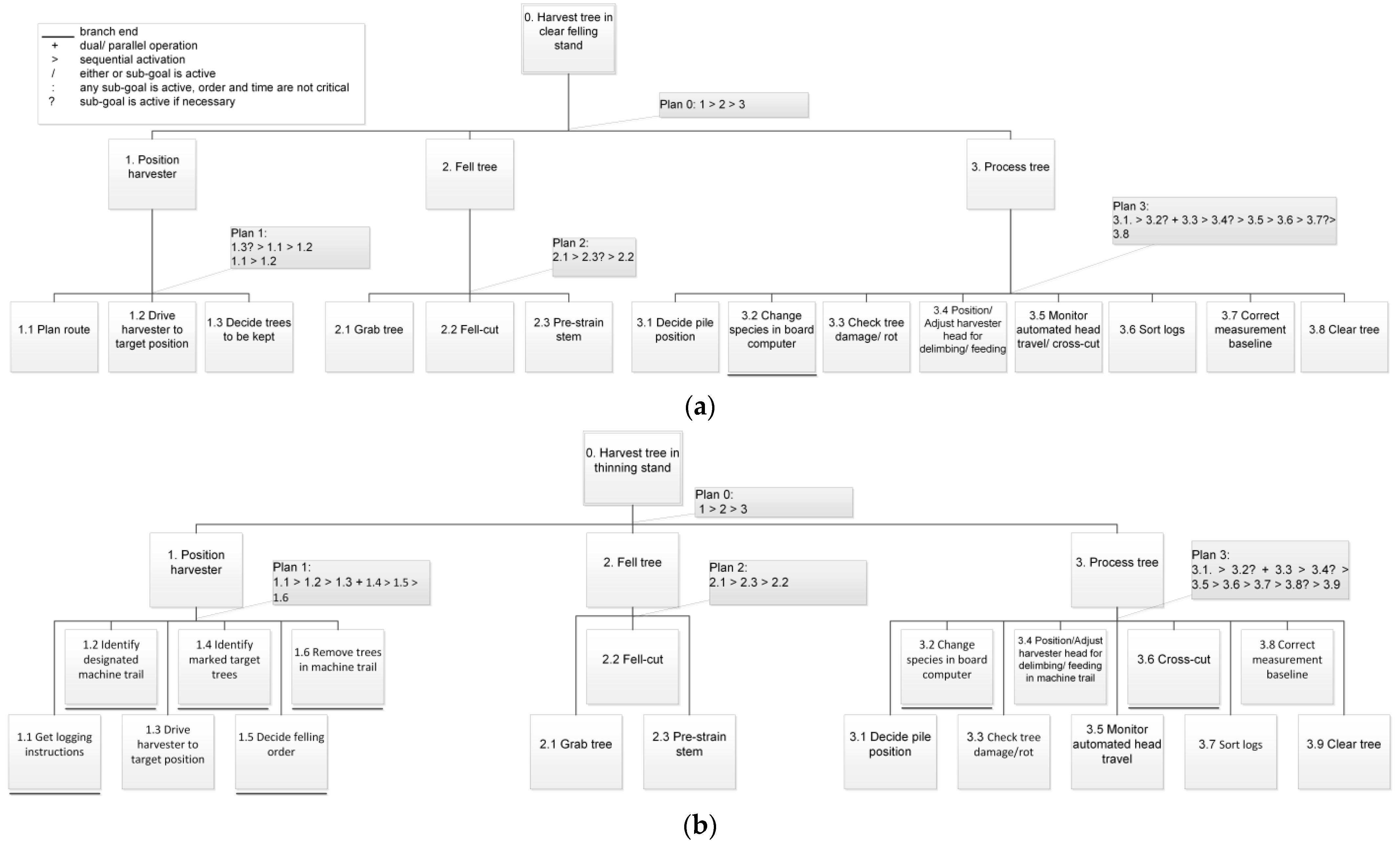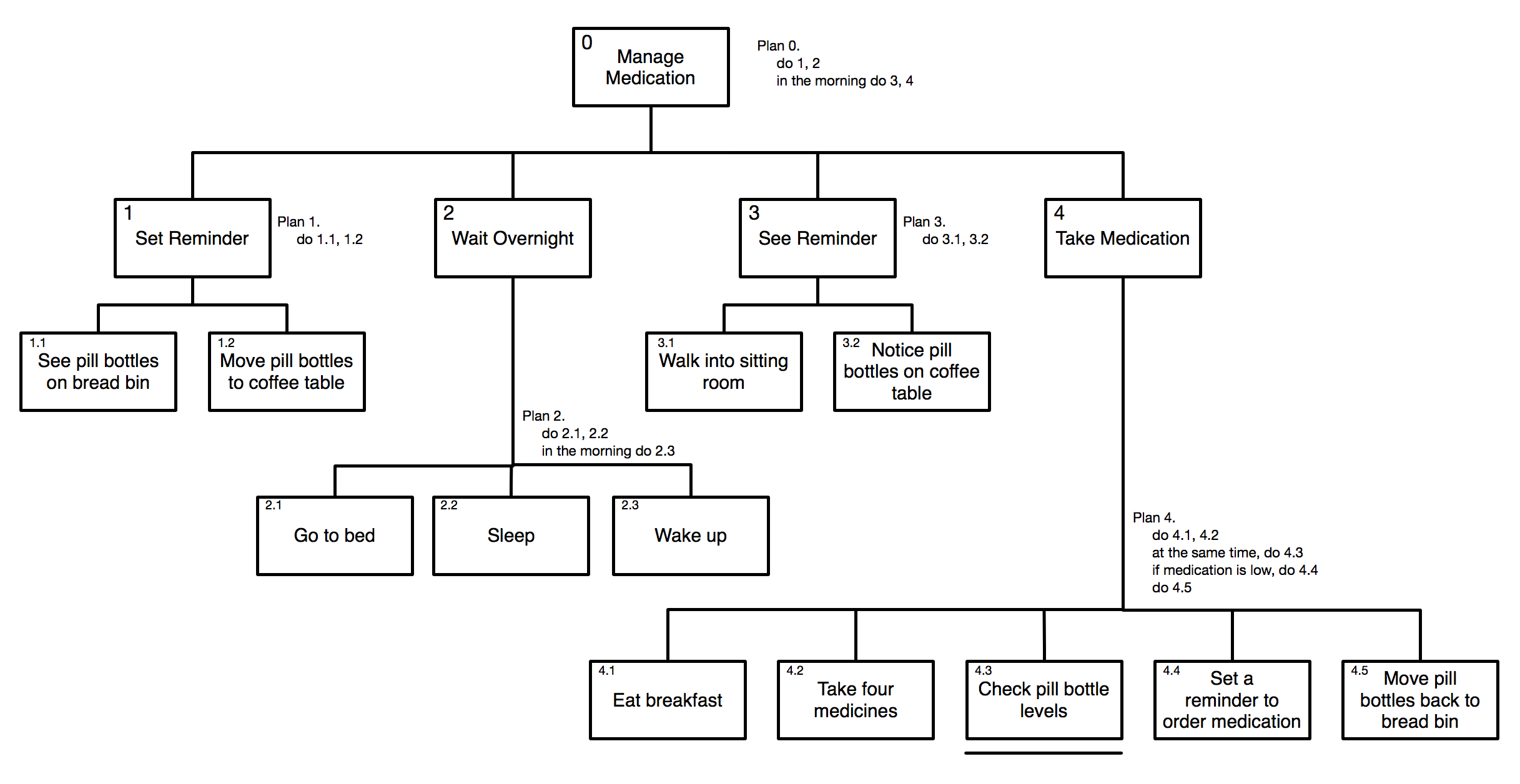Mobile Interaction Design ePortfolio Amila Pathum Kandambi Task
Hierarchical task analysis (HTA), arguably the most popular task analysis method of all time, provides a useful approach for describing expert behavior and the factors influencing it. Its utility is enhanced by the fact that there are various ergonomics analysis methods that build on HTA outputs to provide in-depth analyses of behavior. This.
Steps of hierarchical task analysis. Download Scientific Diagram
Hierarchical task analysis (HTA) is a widely used type of Task analysis< where a high-level task is decomposed into a hierarchy of subtasks. An HTA is sometimes referred to as a hierarchical decomposition. Related Links Detailed description How To Related Links Annett, J., Duncan, K.: Task Analysis and Training Design.

Using user Data Hierarchical Task Analysis (HTA) Lilly Browne
The hierarchical task analysis is a structured approach to understanding how users complete tasks within a system. This gives us a detailed and comprehensive view of all the steps involved in completing a task, the opportunity to identify opportunities for improvement, and a nice clear way of sharing our findings.
Hierarchical Task Analysis Diagram Tabitomo
In a blog post from last year, I shared my understanding of task prompting and what it aims to achieve. I explained how most tasks can be broken into smaller sub-tasks, or steps.. This week, I have been exploring a method called Hierarchical Task Analysis (HTA), which is a technique used to systematically deconstruct a task into its individual steps. In this blog post I will show you an.

Hierarchical Task Analysis A hierarchical task analysis provides an
Hierarchical Task Analysis (HTA) is carried out by professionals who have to undertake a wide range of human factors and human resource design decisions. Using a wide range of industries and contexts to demonstrate the aplicability of HTA in various settings, the author has used straightforward and accessible case studies and examples for the.

HCI 6.2 Hierarchical Task Analysis (HTA) Model with Examples YouTube
Hierarchical task analysis is the basic analysis for any task, in which high level tasks are broken down into their constituent subtasks and operations. From: Journal of Biomedical Informatics, 2008 Probability Sample Questionnaire Study Response Category User Requirement View all Topics Add to Mendeley About this page User Needs Analysis
Hierarchical Task Analysis (HTA) Diagram Software Ideas Modeler
Hierarchical task analysis (HTA) is a core ergonomics approach with a pedigree of over 30 years continuous use. At its heart, HTA is based upon a theory of performance and has only three.

Hierarchical task analysis using GUI to complete the identical task by
7 shares Cite this article Literature on Hierarchical Task Analysis Here's the entire UX literature on Hierarchical Task Analysis by the Interaction Design Foundation, collated in one place: Learn more about Hierarchical Task Analysis Take a deep dive into Hierarchical Task Analysis with our course User Experience: The Beginner's Guide .

Hierarchical task analysis of the main tasks repairing computers
Take the following steps to perform a task analysis using a hierarchical format: 1. Identify the task and its end goal. Think about why you're analyzing this task and what you want to learn from it. You may want to identify a pain point in the task or simply understand the complexity of what the user needs to accomplish. 2.

FREE 15+ Task Analysis Samples in PDF Excel MS Word Google Docs
Hierarchical Task Analysis (HTA) is a subjective assessment method used by ergonomists and human factors engineers to identify the tasks that constitute a given work, as well as make visible the levels of importance of these tasks; also, with this analysis it is possible to examine, detect and avoid problems, errors, and failures in the tasks.

A Simple Guide to Hierarchical Task Analysis MakeIterate
This chapter begins by placing Hierarchical Task Analysis in its historical context. The method is presented as a general analytic strategy for providing solutions to initially specified performance problems. The unit of analysis is an operation specified by a goal and activated by an input, attained by an action, and terminated by feedback.

Hierarchical task analysis of the main tasks repairing computers
A hierarchical task analysis (HTA) describes an activity in terms of its specific goals, subgoals, operations, and plans. Once the analysis is complete, the task activity is described in detail. Uses To construct an in-depth list of goals or tasks associated with a specific process. How do I use this tool? 1.

Forests Free FullText Hierarchical Task Analysis (HTA) for
The Systematic Human Error Reduction and Prediction Approach (SHERPA) ( Embrey et al., 1984) uses hierarchical task analysis (HTA; Annett et al., 1971) together with error taxonomy to identify credible errors associated with a sequence of human activity.

Hierarchical Task Analysis (HTA) Dimitra Dimitrakopoulou
Hierarchical task analysis (HTA) is a core ergonomics approach with a pedigree of over 30 years continuous use. At its heart, HTA is based upon a theory of performance and has only three governing principles.

Hierarchical Task Analysis Human Resources
A Hierarchical Task Analysis (HTA) is a systematic approach used to break down complex tasks into simpler subtasks. It is a highly efficient tool used in human resource management to understand how workplace tasks are accomplished accurately, safely and quickly.

Explore Our Example of Hierarchical Task Analysis Template for Free
Task analysis often results in a hierarchical representation of what steps it takes to perform a task for which there is a goal and for which there is some lowest-level "action" or interaction among humans and/or machines: this is known as hierarchical task analysis.